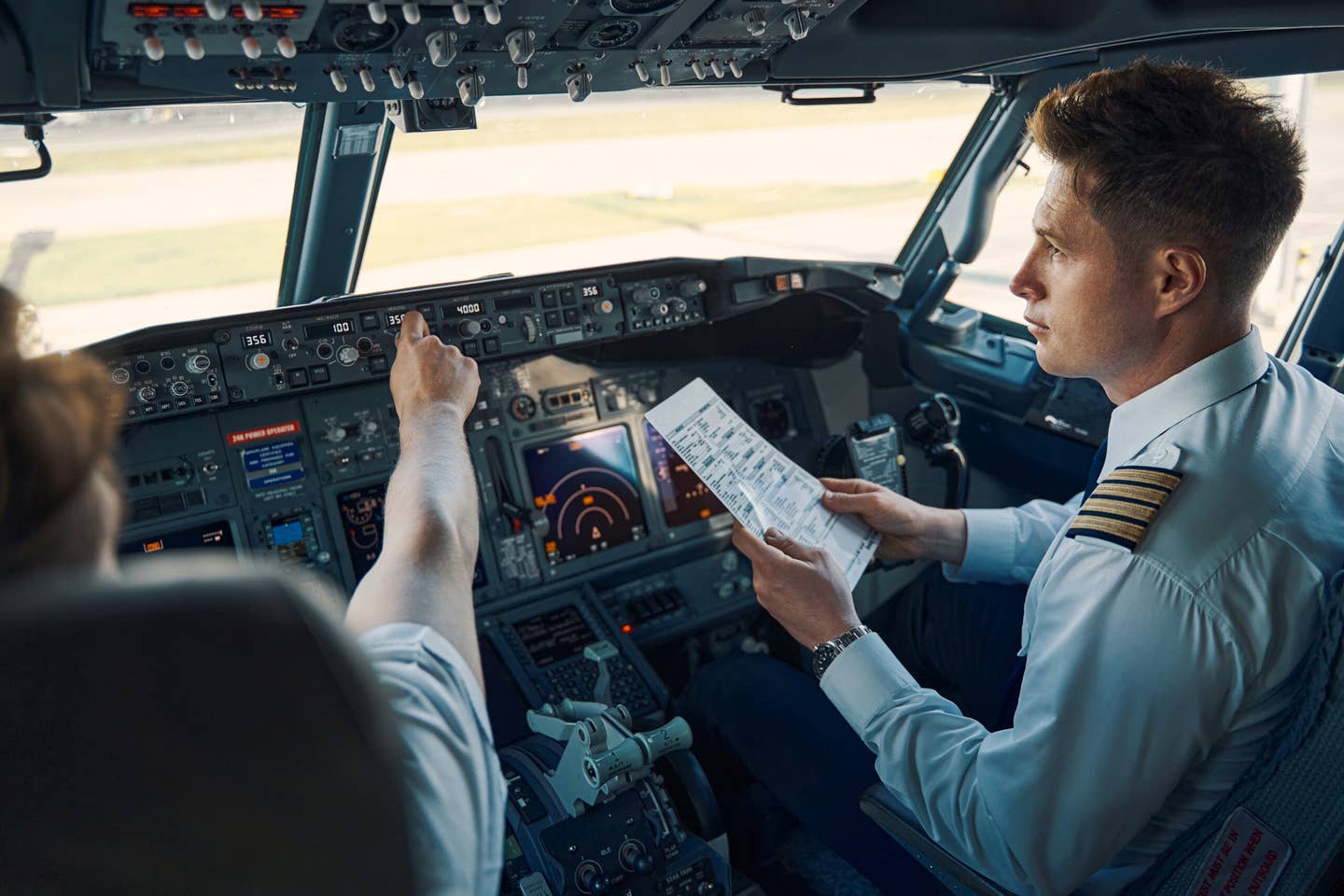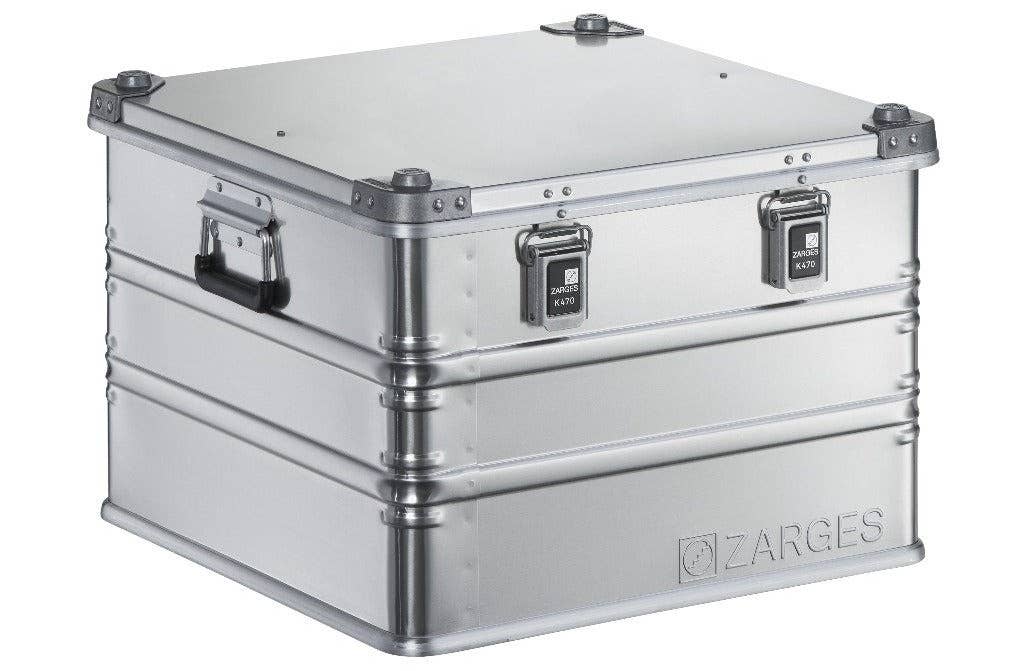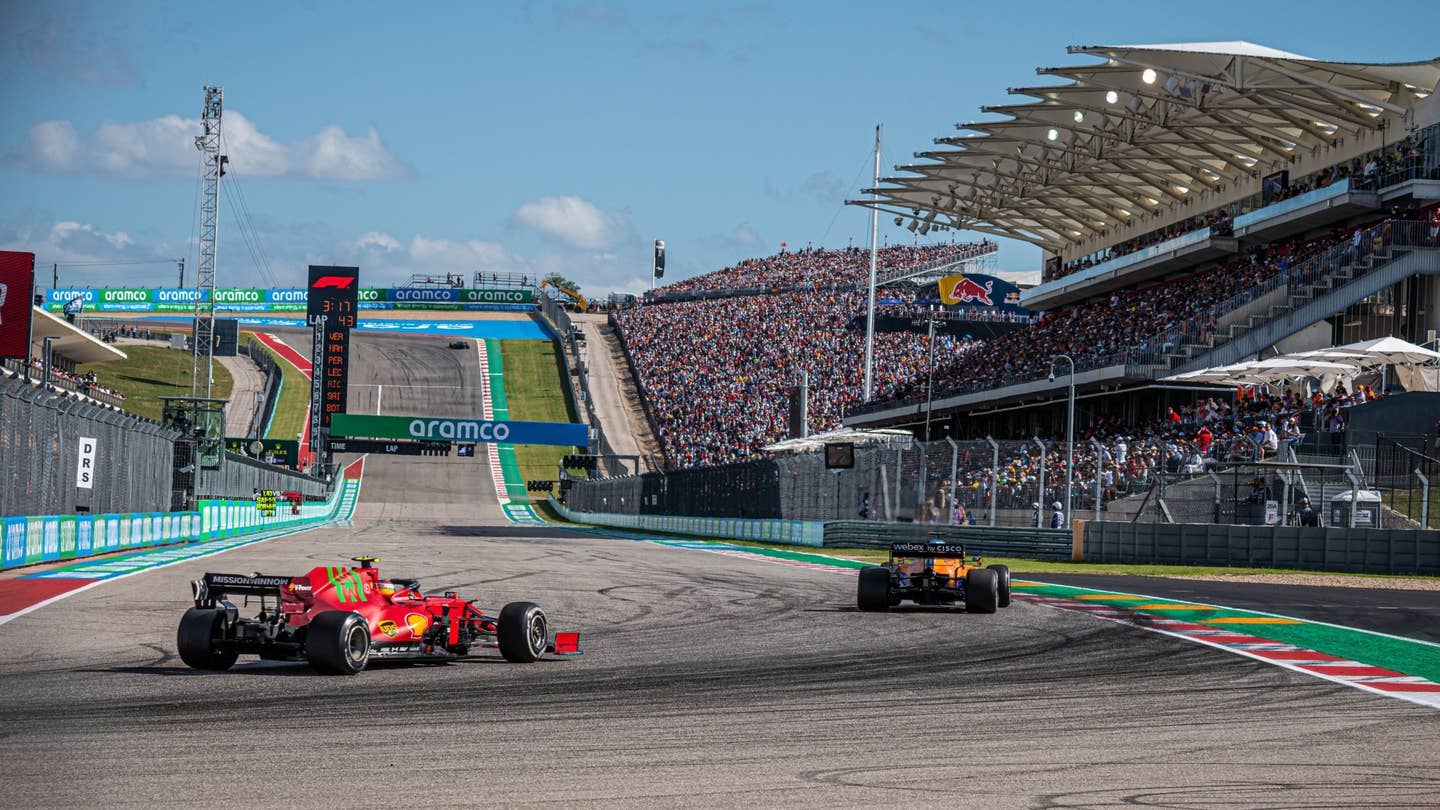What Are the Different Types of Pilot Licenses?
By most accounts, there are 7 types of licenses—or more correctly, certificates—that pilots can pursue.

Learn the various types of pilots licenses. [Credit: iStock]
By most accounts, there are 7 types of licenses—or more correctly, certificates—that pilots can pursue. There are also several different levels of certification, as well as ratings you can add to different certificates to give you more qualifications.
Organizations like the FAA sometimes use “license” and “certificate” interchangeably on their website, but the official term for a piece of paper that gives you the legal right to fly an aircraft is, indeed, called a certificate.
This article will help clear up the confusion between licenses, certificates, and ratings, and take a look at the requirements to receive each of the 7 types of pilot licenses.
Whether you're a busy pilot or just looking for on-the-go education, Angle of Attack's 36+ hours of video training is perfect for you. You'll have everything you need in one place to become a successful pilot starting on day one.
Get Access NowQuicklook: Types of Pilot Licenses
- Student pilot certificate
- Sport pilot certificate
- Recreational pilot certificate
- Private pilot certificate
- Commercial pilot certificate
- Flight instructor certificate
- Airline transport pilot (ATP) certificate
What Is a Pilot License?
A pilot license is a certificate that offers legal proof that you are qualified to fly a given aircraft in given conditions. As with driver’s licenses, there are restrictions with each type of certificate. For instance, regularly licensed driver’s can’t drive 18-wheelers for money.
7 Types of Pilot Licenses
Hopefully, that clears up the difference between certificates and ratings or endorsements! Here is a look at the 7 major types of pilot certificates.
Student Pilot Certificate
Similar to a learner’s permit for drivers, a student pilot certificate is granted after a written exam and allows future pilots to act as pilot in command of a basic light airplane or other categories of aircraft.
Cost: There is no charge for the application to the FAA, but you will need to satisfy the medical requirement, which can either be via your driver’s license (if pursuing a sport pilot certificate) or a third-class medical certificate (for a private or recreational pilot certificate).
Time:
- You must set up a medical appointment, if needed, and take the time to apply
- Apply as soon as you start training via IACRA, the Integrated Airman Certificate and Rating Application site.
- In roughly 3 weeks, you’ll receive the certificate if you qualify, depending on FAA processing times.
Minimum Age:
- 16
- 14 for a glider or balloon
Medical Examination Requirements:
- Yes, unless for sport pilot
- Third class
Minimum Logged Hours: N/A
Limitations:
- Can’t fly alone
- Can’t fly with passengers outside of instructor
Additional Certificates Required: N/A
Sport Pilot Certificate
Sport pilot certificates are for pilots who only plan on flying light sport aircraft (either factory built or homebuilt). These are easier to get than a private pilot certificate, and cheaper, as they take less time, but there are no ratings to add. If you want to fly bigger aircraft, you have to continue to a private pilot certification.
Cost:
- Low end: $4,000
- High end: $8,000
Time: Less than a month
Minimum Age: 16
Medical Examination Requirements: No, if you hold a driver’s license or comply with BasicMed
Minimum Logged Hours: 20 hours
Limitations:
- Can only fly light sport aircraft (LSA)
- No night flight
- Can’t receive compensation
- Maximum of 1 passenger
Additional Certificates Required: N/A
Recreational Pilot Certificate
Recreational pilot certificates are very, very similar to sport pilot certificates, except they allow for the operation of slightly larger and heavier aircraft, certified under Part 23 as opposed to just LSAs. The major differences are in the hours you need to log to apply for the certificate, and the required medical exam.
Cost:
- Low end: $5,000
- High end: $9,000
Time: 1-2 months
Minimum Age: 16
Medical Examination Requirements:
- Yes
- Third class
Minimum Logged Hours: 30 hours
Limitations:
- Stay within 50 nm of home airport unless you get endorsements to go farther
- No flight into airspace requiring communication with air traffic control
- Can’t receive compensation
- Maximum of 1 passenger
Additional Certificates Required: N/A
Private Pilot License
The most common license in the United States is a private pilot certificate. This allows pilots to carry multiple passengers all while getting to fly a wide array of aircraft including high-performance models with proper endorsements and ratings. Plus, you’ll get to fly in and out of controlled airports beyond your home base.
Cost:
- Low end: $9,000
- High end: $15,000
Time:
- 6 months at a minimum
- 1 year at most
Minimum Age: 16
Medical Examination Requirements:
- Yes
- Third class, or comply with BasicMed
Minimum Logged Hours: 35
Limitations:
- Can’t receive compensation
- Must seek additional ratings for types of flight or aircraft
- Multiengine
- IFR
- Must seek endorsements to qualify to fly high-performance and/or complex aircraft
Additional Certificates Required: N/A
Commercial Pilot Certificate
When most people hear of a commercial pilot they think of someone who flies for a popular airline. Those are commercial pilots, but in order to fly those jets, you’ll need to also get what’s called an ATP.
Anyone who wants to accept pay for their piloting skills must seek a commercial pilot certificate. This includes things like dropping water on forest fires, working for Border Patrol, and many other solo operations that are still for pay, thus requiring a commercial certificate.
Cost:
- $50,000 to $70,000 from zero experience
- Additional costs for ratings and endorsements
Time:
- 6-9 months
- After receiving private pilot certificate
Minimum Age: 18
Medical Examination Requirements:
- Yes
- Second class
Minimum Logged Hours: 250 hours
Limitations:
- Can only fly aircraft for hire with limited passenger seats, and under restricted operating conditions
Additional Certificates Required:
- Must have a private pilot certificate to begin training. If you have an instrument rating as well, your commercial certificate won’t be restricted to day operations or beyond 50 nm of the departure airport.
Certified Flight Instructor Certificate (CFI)
A CFI is someone who is FAA-qualified to teach others how to fly. Just as with private and commercial, a flight instructor must also seek out ratings such as IFR in order to be qualified to teach individuals, and ultimately sign off, on those ratings.
Cost:
- $5,000 to $10,000
- In addition to costs of private and commercial certifications
Time:
- 2-4 months
- In addition to time earning private and commercial certifications
Minimum Age: 18
Medical Examination Requirements:
- Yes
- Third class, or comply with BasicMed under certain conditions, or none if not acting as PIC
Minimum Log Hours: 250
Limitations:
- Must seek ratings in order to teach about instrument flight for the rating and multiengine aircraft
Additional Certificates Required:
- Must have private pilot certificate
- Must have commercial pilot certificate
Airline Transport Pilot Certificate (ATP)
At the top of the proverbial aviation food chain is the ATP. These are the pilots who fly hundreds of passengers on multiple-hour flights around the world. If you have an ATP, you can pretty much do anything except fly military hardware, with the right type ratings, recency of experience, and endorsements.
Cost:
- $80,000 to $150,000
- Generally must complete private, commercial, and instrument certifications and ratings and build time prior to applying
Time:
- It can take years to get 1,500 logged hours.
- ATP training is roughly 1 year, if you go through a managed program.
Minimum Age: 23
Medical Examination Requirements:
- Yes
- First class
Minimum Logged Hours: 1,500
Limitations:
- Need type ratings to fly specific aircraft, and maintain recency of experience to operate as an ATP for hire or as PIC.
Additional Certificates Required:
- Must have private pilot certification
- Must have commercial pilot certification plus an instrument rating to build the necessary time
Is There a Difference Between a Pilot License or Certificate?
These two terms may be used almost interchangeably in the aviation world, so no is a fair answer, but in recent history, the FAA has been making a more concerted effort to refer to any space travel paperwork as a certificate. Around the world, other authorities use the term “license,” such as the European Union Aviation Safety Agency (EASA), so if you search online you may find EASA references to licenses. You will also see the “PPL” reference under EASA regulations and documentation.
So, if you’ve said “pilot’s certificate” your whole life, there’s no need to change now… But if you’re just starting, it seems to be the term that will be more popular as civilian space travel continues to grow in popularity.
Ratings and Endorsements
Even though you don’t have to take an exam to be an organ donor or get a veteran stamp on your driver’s license, it’s safe to use them as comparators for ratings and endorsements in aviation.
If someone has their baseline private pilot certificate, they still have restrictions and can’t just jump behind the yoke of a Boeing 787 and start doing acrobatics. This is probably good news for anyone other than the pilot, right?
In order to operate as pilot-in-command (PIC) of a high-performance aircraft, a pilot has to have what’s known as an endorsement. The endorsement covers all high-performance airplanes, with horsepower of 201 hp or higher. As of August 1997, pilots are also required to have a separate endorsement for the operation of complex aircraft, which have retractable landing gear, flaps, and a controllable-pitch propeller (for seaplanes, just the flaps, and controllable-pitch prop), in order to operate those aircraft as PIC.
Ratings are similar, but are a bit broader as they cover an entire category and/or class of aircraft. Two common examples of ratings are a rotorcraft rating (to fly helicopters, for example) and an instrument rating. If a pilot—with any level of certificate originally issued with an airplane or other category rating—wants to fly a helicopter, they need to first get their rotorcraft rating.
There’s also an instrument rating (often referred to as an IFR rating, which stands for “instrument flight rules”), which proves competence in control of the aircraft and its navigation solely by reference to the instruments or displays on the flight deck. This means the pilot can fly without visual cues, generally flight into reduced visibility or into the clouds. If that same pilot wanted to fly a helicopter under IFR, they would also have to get a rating for that type of aircraft. Always check to see if a given type of aircraft you wish to pilot requires an additional endorsement or rating.
How Far Do You Want to Go?
Cost and goals tend to be the two biggest factors when deciding which pilot license to pursue. Sport and recreation licenses can be achieved relatively inexpensively, but it’d only allow you to carry one passenger, and you can’t accept money.
If you want to get paid to fly, you at least have to go for your commercial, which will allow you to fly smaller aircraft for hire, or do things like patrol the skies for police or other agencies. To be an airline pilot, you are going to make an enormous time and monetary investment, but if you love flight, it’s certainly worth it, as ATP pilots rarely make less than six figures in a year!
For more information on all things aviation, consider subscribing to FLYING magazine here.
FAQ
How long does it take to get a commercial pilot license?
A regular commercial pilot certificate differs from what’s called an ATP, or airline transport pilot certificate. The latter may allow you to fly jumbo jets with the appropriate type rating, and normally takes a couple of years, whereas a regular commercial pilot certificate, which simply qualifies someone to accept money for flight, can be earned in less than a year.
How many types of pilot licenses are there?
There are 7 types of recognized licenses in aviation, but many have additional ratings or endorsements that allow pilots to do more with their certificate.
What is the highest level pilot license?
The highest is an ATP, or airline transport pilot. These are the folks on the flight decks of your favorite airline company or flying in other professional capacities.

Sign-up for newsletters & special offers!
Get the latest FLYING stories & special offers delivered directly to your inbox







